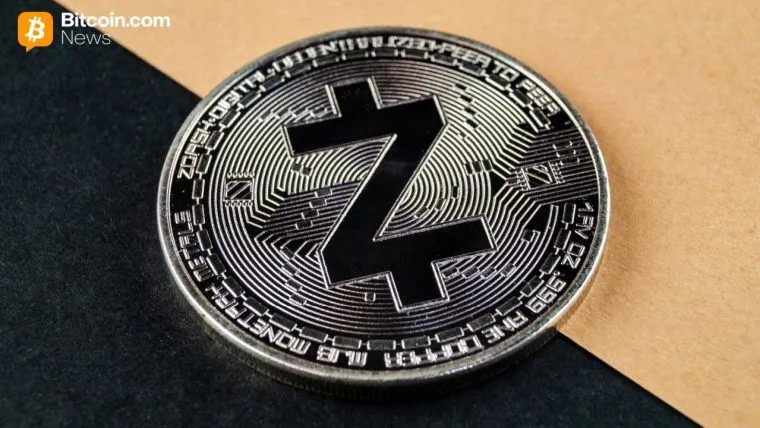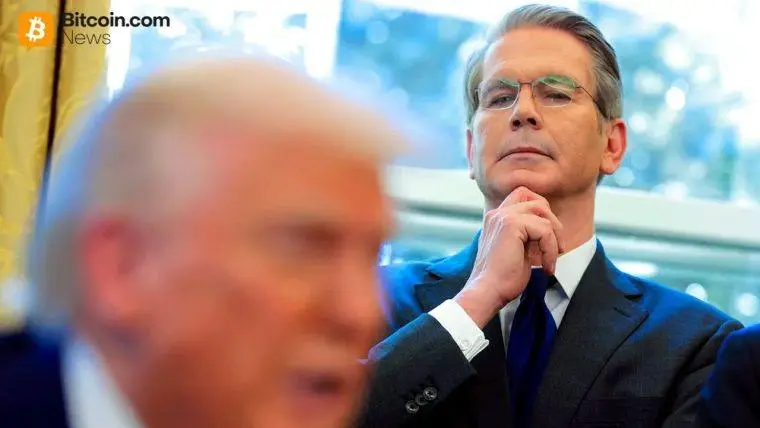This article is reprinted with permission from @Phyrex_Ni, and the copyright belongs to the original author.
As October comes to an end, the most important event in the last week is undoubtedly the Federal Reserve's interest rate meeting. From the current market sentiment, it is highly likely that there will be a 25 basis point rate cut in October, and there shouldn't be any black swan events. The biggest debate right now is whether the Federal Reserve will stop the balance sheet reduction in October or if Powell will announce that it will stop by the end of the year. The reasons for this speculation are mainly as follows:
The liquidity or bank reserves level is close to an ample but not excessive state. A key consideration in the Federal Reserve's balance sheet reduction policy is the liquidity situation in the banking system, including reserves and overnight reverse repurchase (RRP) tools. For example, the Cleveland Fed has pointed out that when deciding when to stop the balance sheet reduction, the Federal Reserve needs to balance maintaining sufficient reserves (to facilitate control of the federal funds rate) with the costs of reducing the balance sheet size. When bank reserves approach an "ample" rather than "excessive" state (i.e., liquidity is neutral rather than loose), the balance sheet reduction may stop.
Market liquidity risks or pressures in the short-term financing market are emerging. If the balance sheet reduction continues and leads to a significant decline in bank system reserves and instability in money market rates, it may weaken the Federal Reserve's ability to control short-term rates. Some research reports indicate that continuing large-scale balance sheet reduction could push liquidity to the brink of exhaustion.
Persistent inflation and changes in economic growth and monetary policy interest rate paths. When deciding to end the balance sheet reduction, the Federal Reserve will not only look at the size of the balance sheet but also consider interest rate policy, inflation trajectory, economic growth, and employment conditions. If the economy slows down or financial conditions tighten excessively, the Federal Reserve may be more inclined to stop the balance sheet reduction to avoid further tightening. Conversely, if inflationary pressures weaken or market expectations shift, it may also prompt an earlier stop to the balance sheet reduction.
Preparing for future interest rate operations and policy tool reserves. The balance sheet reduction is a background monetary policy tool, and when interest rate policy enters a downward channel or prepares for rate cuts, the Federal Reserve may want to retain the option to stop the balance sheet reduction as ammunition. If the Federal Reserve anticipates future rate cuts or liquidity releases, stopping the balance sheet reduction can free up more potential monetary policy space.
As of now, total reserves of bank deposit institutions are approximately $2.93 trillion as of October 2025. The Federal Reserve's recent research defines "ample reserves" as about 8% to 10% of GDP. As of the second quarter of 2025, the nominal GDP of the United States is approximately $30.49 trillion, which corresponds to reserves of $2.44 trillion to $3.05 trillion at 8% to 10%. Currently, it is just close to the "ample range." If the balance sheet reduction continues at a rate of $20 billion per month, it may drop to around 9% by next year, approaching the lower edge of the ample range (about 9% of GDP). At that point, the Federal Reserve may believe that further balance sheet reduction will bring systemic liquidity risks.
Therefore, if the balance sheet reduction can be stopped in October, it would indicate that the Federal Reserve's policy will shift from continuing to tighten liquidity to stabilizing liquidity supply, in coordination with the rate cut path, enhancing policy transmission efficiency. Bank system reserves will no longer continue to decline, and fluctuations in repos and short-term rates may ease, which is mildly beneficial for credit spreads and the financing environment.
Stopping the balance sheet reduction is often one of the leading signals of easing dollar liquidity pressure, which is favorable for medium- to long-term interest rate decline expectations and risk asset sentiment. Coupled with rate cut expectations, it enhances investors' risk appetite. In simpler terms, stopping the balance sheet reduction is a prelude to the Federal Reserve entering a phase of large-scale rate cuts, indicating that liquidity will gradually recover, and investors will be more willing to invest in risk assets. Currently, the strongest asset is the U.S. stock market. In the past two weeks, I have extensively expressed the correlation between Bitcoin and U.S. stocks, mainly tech stocks, so the balance sheet reduction will have a good liquidity stimulation effect on cryptocurrencies, especially BTC.
Therefore, I believe that even if the Federal Reserve does not stop the balance sheet reduction in October, it is very likely to consider stopping it within 2025, particularly in the December interest rate meeting. There is also concern about the U.S.-China trade disputes, but based on this week's performance, it seems there is no need to worry. The key point is that Trump's original plan to impose an additional 100% tariff on China on November 1 is unlikely to be executed, indicating that the U.S. has met certain demands in the U.S.-China trade negotiations. This also means that the risks on the trade front have temporarily cleared, and both sides are likely to have reached a phased understanding on tariffs and import quotas, with the U.S. gaining concessions in manufacturing and agricultural products, while China secures a window for stability in its supply chain and exports.
From a market perspective, this conditional easing is sufficient to refocus capital on the Federal Reserve's policy path and liquidity expectations, rather than geopolitical uncertainties. The focus will shift back to monetary and capital aspects. If the October interest rate meeting cuts rates by 25 basis points and signals that the balance sheet reduction is nearing its end, then the liquidity pressure on the dollar will further ease, and U.S. Treasury yields may temporarily decline.
Risk assets will welcome a brief respite, with U.S. stocks and cryptocurrencies, especially BTC, responding most directly. Overall, the easing of U.S.-China negotiations effectively pulls the market back from geopolitical risks, while the Federal Reserve's policy shift determines the sustainability of this rebound. What truly needs to be observed is not whether tariffs are canceled, but whether capital flows back into risk assets.
The reason I refer to it as a "brief" window is that the easing of U.S.-China trade relations is a tactical concession rather than a structural reconciliation.
On the political level, this is a phased transaction, not a long-term compromise. Trump's decision to halt high tariffs on China is essentially to fulfill his political balance during or after the election. He needs to find a controllable route between domestic manufacturing and inflation, rather than completely easing U.S.-China relations. This pause means both sides temporarily gain, but either side can restart confrontation whenever they believe the benefits are sufficient or public opinion shifts. Essentially, this is a "reversible political exchange" that lacks sustainability.
On the economic level, the structural decoupling trend has not reversed. The core contradiction in U.S.-China trade has shifted from "tariff surface issues" to "supply chain and technological sovereignty." Whether it is the U.S. CHIPS and Science Act, export restrictions on AI and advanced processes, or China's export controls and Southeast Asia's order transfers, both sides have entered a phase of systematic diversion. Pausing tariffs merely reduces external volatility temporarily, but the structural migration of global manufacturing and capital flows continues. Thus, this easing feels more like a "respite" rather than a "restart of cooperation."
On the financial level, the liquidity cycle still dominates risk assets. The current increase in market risk appetite is based on the combination of "rate cut expectations + the end of balance sheet reduction." However, this liquidity release is temporary; if data in November or December shows a rebound, such as a significant rise in inflation data, the Federal Reserve may still shift back to a hawkish stance. Therefore, the liquidity window is dynamic and not guaranteed to remain accommodative, although the broader trend towards easing is inevitable.
On the market sentiment level, investors' focus has temporarily shifted from trade risks to monetary easing, but the structural games of strategic distrust between the U.S. and China, supply chain restructuring, AI controls, and defense against dollar hegemony still exist. As a result, the market can only switch back and forth between short-term easing and long-term games.
Thus, this is merely a brief respite rather than a cyclical turning point. The structural contradictions between the U.S. and China still exist, and the migration of global supply chains continues. What truly determines market direction remains the Federal Reserve's liquidity cycle and policy games.
This week has seen quite a few events. In addition to these two major macro events, five of the seven sisters will announce their earnings reports, including Apple Inc. (AAPL), Microsoft Corporation (MSFT), Alphabet Inc. (GOOGL), Amazon.com, Inc. (AMZN), and Meta Platforms, Inc. (META). The release of these earnings reports can significantly influence the U.S. stock market in a short time, especially during the current phase of shifting liquidity expectations and fragile market sentiment, where the performance of tech giants will directly determine the risk appetite of capital.
If the overall performance exceeds expectations, the tech sector is likely to drive a short-term rebound in indices, thereby reinforcing the market narrative of a soft landing. Conversely, if there is a slowdown in earnings or downward guidance, it may exacerbate market concerns about the peak of the earnings cycle, triggering a short-term capital withdrawal. Overall, this week's earnings reports are not just company-level data events but are core propositions to verify whether "liquidity easing can reignite corporate earnings." For the cryptocurrency market, this sentiment transmission is equally evident; once U.S. tech stocks rebound, BTC typically benefits in sync. This issue has been discussed extensively in the past two weeks, so I won't elaborate further.
In terms of short-term strategy, I personally believe it is more suitable to maintain stability. If U.S. Treasury yields continue to decline after the earnings reports, it indicates that liquidity expectations are stabilizing, and risk assets can continue to rebound. Conversely, if yields rise again, it suggests that the market is beginning to reprice the Federal Reserve's path. For BTC, the price structure may continue to follow the fluctuations of the Nasdaq.
There are also milestone events occurring in the cryptocurrency space. This week, three cryptocurrency spot ETFs will launch in the U.S., namely HBAR, LTC, and SOL, with SOL's spot ETF being the most anticipated, seen as the asset with the most institutional potential after BTC and ETH. This not only signifies a key step towards compliance for the Solana ecosystem but also marks the formal entry of "non-BTC main chains" into the U.S. mainstream financial system. The market has often said, "BTC represents reserve assets, ETH represents infrastructure," and SOL's inclusion gives the narrative of "high-performance chains" ETF-level recognition for the first time.
From a funding perspective, these new ETFs typically attract some passive capital that follows BTC and ETH ETF strategies during their initial listing, while also encouraging some high-risk preference institutions to test their positions. This means that if SOL's trading activity exceeds expectations, the market may interpret it as a signal of traditional investors positioning in SOL. Conversely, if trading is tepid or inflows are limited, it indicates that capital remains cautious and interest in cryptocurrencies is still not robust. Of course, this time, all SOL spot ETFs come with staking features, which also have certain appeal for traditional investors.
However, based on historical data for BTC and ETH, only the "big three" are truly large holders: BlackRock, Fidelity, and Grayscale. Apart from Grayscale applying for SOL's spot ETF, neither BlackRock nor Fidelity has applied. From a funding volume perspective, a single BlackRock often accounts for more than half of the total holdings, and while Fidelity's investors may have a tendency to chase highs and cut losses, they are often among the top three holders. BTC's holdings are almost catching up with Grayscale's, so the absence of plans from these two large institutions may significantly reduce SOL's purchasing power compared to BTC and ETH.
On the other hand, Grayscale was one of the earliest players in the cryptocurrency asset space. According to the latest S-1 filing and market capitalization estimates, Grayscale currently holds about 500,000 SOL (valued at $1 billion). Based on the data from BTC and ETH, it is very likely that they will sell about half of this in the short term. This also puts pressure on the spot price of SOL.
From a historical perspective, the launch of a spot ETF is undoubtedly a milestone positive development, which will help SOL's price in the short term. However, once it officially goes live, Grayscale's selling may outweigh the buying from other institutions, especially since BlackRock is not participating. Essentially, it will likely only be after Grayscale's investors finish selling that there will be a positive price guidance again. Of course, this has happened historically with BTC and ETH, but it does not guarantee that SOL will replicate the same pattern.
After all, SOL also has staking.
Additionally, the U.S. government shutdown has now lasted for 28 days. If it continues for another week, it will surpass the 35-day shutdown record set during Trump's first term. Currently, the market expects this shutdown could extend to 45 days, which means that the fiscal shutdown has begun to affect government data releases and spending rhythms. With the loss of reference indicators (such as GDP and PCE), the market can only rely on liquidity and risk appetite for self-pricing.
In the short term, the extended shutdown has limited overall economic impact on the U.S., but if it surpasses 40 days, delays in consumer confidence and employment data will weaken the predictability of the Federal Reserve's decisions, thereby increasing market volatility. At this point, rate cut expectations may actually strengthen investors' risk appetite.
As the shutdown enters its fourth week, institutional investors are shifting their focus from the political deadlock itself to liquidity distribution and the performance of safe-haven assets. Gold has seen profit-taking after reaching new highs, while U.S. Treasury yields remain low, indicating that the market still bets on the Federal Reserve continuing to cut rates. Meanwhile, some funds have started to flow back into high-volatility assets, including BTC and U.S. tech stocks. In simpler terms, this reflects expectations for the Federal Reserve to continue cutting rates or to stop the balance sheet reduction.
Interestingly, this political deadlock has become a short-term support for risk markets. The shutdown forces a temporary slowdown in fiscal spending and eases inflation pressures, providing the Federal Reserve with more room to cut rates. Although Trump cannot lay off workers during the shutdown, it has significantly impacted expectations for labor data. If negotiations show no progress next week, investors are likely to reprice U.S. credit risk. Especially since next week marks a relaxation period for macro data and earnings reports, with the Federal Reserve's meeting concluding, U.S.-China talks wrapping up, and key stock earnings reports finishing, the market may refocus on the shutdown, increasing volatility in risk markets.
Next, let's look at on-chain data.
First, the exchange inventory data remains very optimistic on a weekly basis. Although BTC's price has been unstable during the week, the inventory on exchanges continues to decline. Regardless of whether prices rise or fall, investor sentiment for buying BTC has not been halted by price fluctuations. The decline in exchange inventory essentially indicates that investors still have a long-term bullish outlook on Bitcoin.
Looking at a longer time frame, the total BTC inventory on exchanges is currently consistent with June 2019. This is the biggest difference in this cycle; in the past, as BTC prices rose, more investors would transfer BTC to exchanges to seek the best selling time. However, it is evident that since Trump attended the Bitcoin Consensus Conference and mentioned BTC as a strategic reserve, the inventory on exchanges has been decreasing for nearly a year, regardless of BTC's price movements.
On one hand, this reduces the short-term liquidity of BTC. With continued purchases from institutions and ETF investors, this cyclical selling based on price changes has been greatly alleviated. On the other hand, the ongoing buying from more investors indicates that BTC has become a new asset category. In BlackRock's latest investment review details, BTC's returns rank third and represent a completely independent category, indicating that BTC has become a core asset for global risk appetite, fundamentally changing the attributes of BTC's previous four-year cycle.
From the perspective of long-term holders, it currently feels like a game of accumulation or distribution. For now, I place it in the accumulation phase. If the data continues to lean towards long-term holders accumulating, it often indicates that BTC's price is starting to decline. Conversely, if long-term holders shift from accumulation to distribution, it usually signifies that BTC's price is rising. This relationship has not been disproven even now. Of course, I believe the changes in "long-term holders" are more about the changes in exchange inventory, so I see it more as a game, and I have not yet seen a more accurate direction.
Next, we look at the purchasing power data for BTC and ETH spot ETFs. In the past week, although purchasing power has increased, some funds have started to flow back into the cryptocurrency space. However, it is clear that BTC's purchasing power is recovering faster, even though the total amount of funds is not high. At least it indicates that user sentiment is warming up, while ETH's data shows a larger gap, with purchasing power lagging behind BTC and more selling occurring. Currently, investors' interest in BTC far exceeds that in ETH. The upcoming SOL spot ETF may also divert some funds, but without the support of BlackRock and Fidelity, it is expected to be limited.
Next, we look at the data for BTC and ETH's open contracts. Both data sets show that open contracts have gradually increased, but they are still at low levels, indicating that the influx of funds has only just begun. Historically, when prices oscillate at high levels while open interest continues to rise, it often means that new long and short battles are building energy. If prices rise in tandem with moderate growth in open interest, it indicates that new funds are building positions in line with the trend. However, if prices stagnate or even pull back while open interest surges, it may indicate reverse positioning or short testing.
The current structure is closer to the former, with prices gradually rising, leverage accumulating moderately, and net fund inflows not yet saturated. This typically represents a healthy early stage of leverage expansion, indicating that the market is still in a sustainable phase rather than a speculative overheating at the end. In simpler terms, the current level of open interest represents the starting point for liquidity to re-accumulate. If BTC and ETH prices can maintain a stable upward trend while the leverage ratio in the derivatives market does not excessively inflate, a new trend driven by spot and boosted by leverage is likely to form.
From the distribution data of BTC investors, although recent prices remain unstable, addresses representing high-net-worth investors are consistently buying BTC, showing remarkable stability and almost no sensitivity to price changes. In contrast, small-scale investors are more focused on price changes and are more sensitive to price fluctuations. In the past two days, there have been clear signs that small-scale investors are starting to exit. Currently, the buying intensity of high-net-worth investors has become a key force supporting prices. As long as there is no systemic risk, even if prices pull back, the fluctuation range of BTC remains very limited.
Finally, regarding the URPD data, it appears that despite the recent frequent price fluctuations, most investors have not shown signs of panic. The holdings of loss-making investors remain relatively stable, with no large-scale reductions in holdings, indicating that most investors' sensitivity to BTC prices is decreasing. More investors prefer to buy at lower prices, and the behavior of panic selling due to price drops is diminishing.
In summary, although the price fluctuations have been frequent in the past two days, the main theme of the market has temporarily escaped the shadow of U.S.-China trade and returned to the Federal Reserve's monetary policy formulation. According to the current interest rate cut probabilities provided by CME, the probability of a 25 basis point cut in October has reached 99.9%. The market has fully anticipated the Federal Reserve's rate cut this week. Next, we will see what kind of statements Powell will make. Additionally, a large number of earnings reports this week will also impact U.S. stock prices, and next week's focus may shift to the U.S. government's shutdown.
Related: Coinbase increases its Bitcoin (BTC) holdings by $300 million in the third quarter.
免责声明:本文章仅代表作者个人观点,不代表本平台的立场和观点。本文章仅供信息分享,不构成对任何人的任何投资建议。用户与作者之间的任何争议,与本平台无关。如网页中刊载的文章或图片涉及侵权,请提供相关的权利证明和身份证明发送邮件到support@aicoin.com,本平台相关工作人员将会进行核查。




